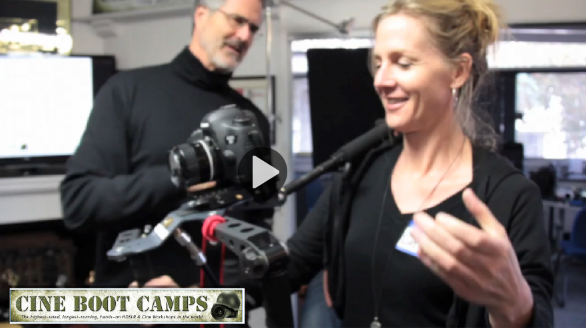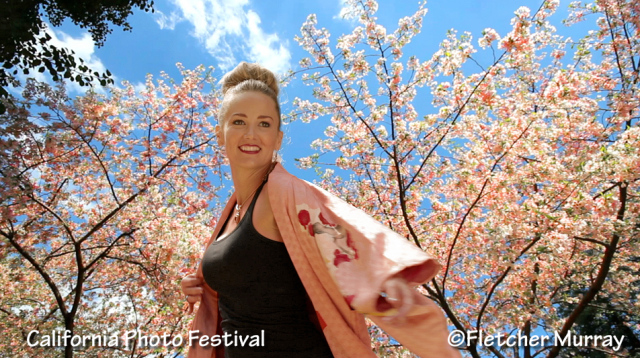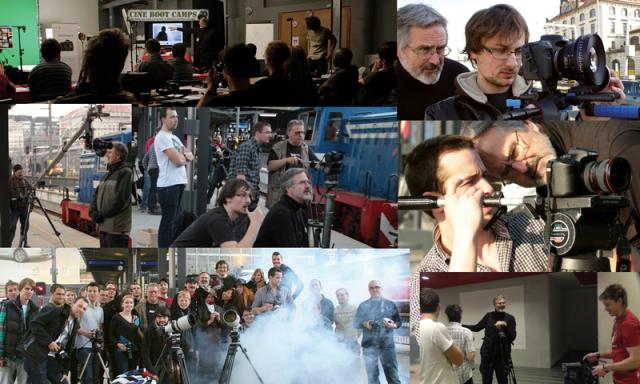It’s hard for a still photographer to step into the world of motion pictures. Aside from the new menu settings (hundreds of choices), there are new creative and mechanical aspects.
For three years, we’ve been training still photographers at the Palm Springs Photo Festival, Brooks, the California Photo Festival, and the CineBootCamps to shoot great video with their Canon DSLRs.
The differences between the still world and motion picture world are much more than still photographers yelling “Hold it”, and filmmakers yell, “Action”.
Here are the top seven:
1) Resolution - For a still photographer, telling them they’ll now be shooting at 2 megapixel resolution is like going back the Model T Ford. But it’s true. Video shoots at a disappointing 2k (for a 1920 by 1080 sized picture. That’s all TV does at the moment.) Of course, there are exceptions. You can achieve higher resolutions with the Canon 1D X or if you install the Magic Lantern software add-on.


2) Creating a Flood of images - The motion picture audience will not be studying a single photograph for five minutes at a time. (If they did they’d see how bad video’s resolution is.) Luckily, the single frames fly past the viewer’s eye 24 frames per second (or higher) and their attention is hurried along from measuring resolution to following the story the pictures are telling. If the story’s great, the audience won’t care what the resolution is. (We have hands-on drills to expand the story from a single image to a flow of three-act image scenarios.)

3) Camera Movement - Unfreeze your camera. The upside here is that by moving the camera (on a dolly, or a slider, or a jib) one can bring the third dimension (depth) to the image. This brings the audience into the picture, establishing three-dimensional space. Something stills can’t do (unless you’re shooting 3D). Often our still photographers will video our model from just one spot, as if they are still shooting stills.
(We invite them to unfreeze and move to different angles).
4) Actor/Model Movement - You get to “unfreeze” your model in video….expand “the Pose” into a flow. Still models tend to freeze in a pose. Now they have to flow. You have to determine where a sequence begins and ends. Then, you have to build sequences to blend together to move a story along. (We also have drills to help you unfreeze your creative mind.)

5) Time - In still photography you’re freezing time. In motion pictures you’re capturing a flow of still moments to be reborn later when played back. You could say you’re capturing the 4th dimension – time. And again, you have to determine what happens over this timespan…in each scene as well as the whole movie. Before you just wanted an instant. Now you’re creating a communication that captures days. (We have drills to expand from a moment to a flow that captures the passage of time.)
6) Light - Still photographers set the light for one angle, one frame, one millisecond. Canon HDSLR motion picture photographers set the light according to the opening position camera will be in. Then, set the light for the ending position the camera will be in. Then, check that the middle of the camera move doesn’t get any flare from light sources (which is one of the reasons you see those matte boxes on the camera lens). And again, these are different lights…continual illumination, not flash.
7) Group Create - The camera operator moves from the still world (where they and the model are in a one on one situation), to a world of creative filming as a group, which can add a dolly grip (someone to push the dolly), a focus puller, a gaffer to handle the lights, a person capturing audio, and a clapboard person. It’s like moving from playing golf to playing basketball. Of course for smaller video shoots the camera person may have to wear most of those hats.

There are many more nuances in the transition from stills to video. At the Palm Springs Photo Festival we offer two workshops – Basic Video and Advanced Video techniques. It’s fun to watch still photographers melt from the frozen world of stills to the swarthy, lo-res, 24 frames per second fluid world of motion pictures.
(Click Here to register for the Palm Springs Photo Festival, April 28 0 May 2.
Click Here for more info about Fletch’s CineBootCamps.)
- See more at: http://blog.theassociation.tv/#sthash.pO8ZJd6I.dpuf

